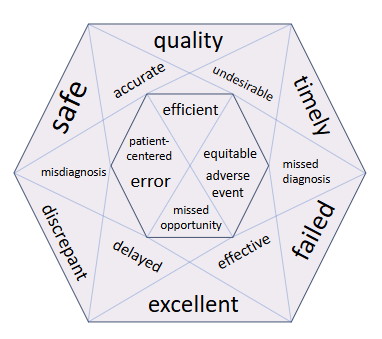A correct diagnosis is essential to understand a patient’s condition and determine the most beneficial management in partnership with that patient. Despite the simplicity of “a correct diagnosis,” terminology and methods differ when defining success and failure in diagnosis and diagnostic processes.
Like a multi-faceted prism, different terms describe varying perspectives, insights, or challenges (Figure). This diversity reflects the inherent complexity of diagnosing, as well as the potential for different stakeholders to have different goals or perspectives for diagnostic improvement.
Figure: illustration of multiple terms and perspectives related to diagnosis.

This issue brief explores a variety of terms and perspectives that describe aspects of diagnostic success or consequences of diagnostic failure. It provides historical context, underlying assumptions, implications, limitations, and appropriate use of terms.
This summary is directed to clinicians, researchers, and others select the most suitable word or phrase for their purposes and understand the terminology others use. There is no single best term for all circumstances or perspectives, rather many lenses, depending on the paradigm, orientation, and purpose, through which we can view diagnosis and diagnostic improvement.



